How To Prepare For An Overnight PWC Adventure
A tour into the great unknown requires some planning
I recently had the opportunity to spend a day with Steven Moll, the driving force behind the PWC-themed TV show Dangerous Waters. Our conversation centered around some of the wild adventures that Steven and crew have documented on the show, but also on Moll’s belief that manufacturers are missing the boat when it comes to marketing personal watercraft.
Specifically, Moll thinks that PWC are meant for adventure, and that people should be looking to set out for the horizon…rather than just spin another lap around the same old bay.
Guide To Personal Watercraft Touring Operators
That sounds a lot like touring, something you don’t seem to hear that much about anymore. Sure, touring has become a buzzword for craft with bolstered saddles and decent storage space, but what it truly means is setting out on your PWC for somewhere far away, a place you might have to spend hours and hours to get to, and ideally, camp out when night falls. Sounds pretty cool, but to do it right requires preparation…and thinking about details you might otherwise never consider.
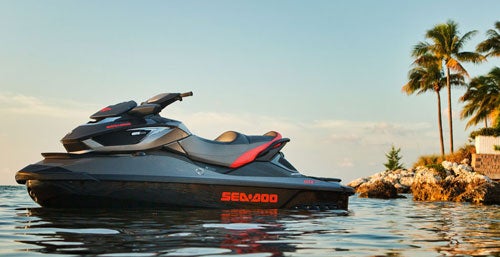 PWC like this Sea-Doo GTX Limited iS 260 are ideal for getting away from it all.
PWC like this Sea-Doo GTX Limited iS 260 are ideal for getting away from it all.Want to make like Moll and have an adventure…even if it is just an overnight? Here’s how to do it smart.
Plan Ahead
Overnighting on a PWC trip may mean a waterfront hotel, but chances are you’ll be pulling up to a vacant shoreline and sleeping under the stars. You probably already have a good idea of where you’d like to explore; scour the Internet for waterfront camping areas along the route. Ideally, you’ll need a beachfront location where you can safely secure your PWC, whether it’s pulled up onto shore or anchored nearby. It’s also a good idea to find a spot that is sheltered from the wind, not susceptible to strong currents or tides, and yes, legal to spend the night at.
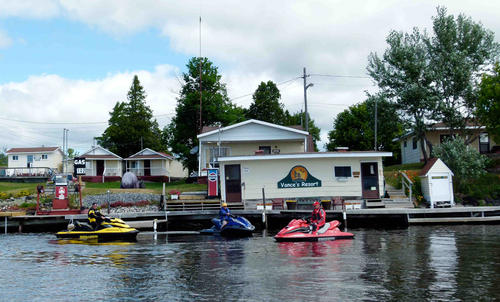 While a waterfront resort like this is a welcome sight, prepare to sleep under the stars on your overnight PWC adventure.
While a waterfront resort like this is a welcome sight, prepare to sleep under the stars on your overnight PWC adventure.Though your PWC will likely be in sight, take the key or lanyard to prevent any surprise thefts. If you’re anchoring, run an additional line to shore for an added measure of security should your anchor come loose during the night.
Choose Your Accommodation
Truly sleeping under the stars can be liberating, but it can also be cold or buggy. If you prefer shelter, a simple, freestanding tent is your best bet, both for its simple setup and compact size. Stow it in a dry bag to keep it dry, and place it low in the bow storage compartment, where it can both pad other items and take up the least amount of space. Not a fan of sleeping on the hard ground? Pack a simple foam camping roll to soften things up.
Ontario’s Awesome Ottawa River PWC Tour + Video
Avoid air mattresses that need to be blown up. They take up too much space and require an added inflator.
Pack Light
Along those same lines, keep other items to a minimum. Pack “light” is a saying you’ve probably heard many times, but on a PWC it’s essential.
And don’t just pack light, pack right. Choose clothes that can be worn numerous times, or materials that dry quickly. As to food, don’t keep it in its original boxes or bags. Repackage into smaller, reusable containers that take up less room and pack into tighter spaces.
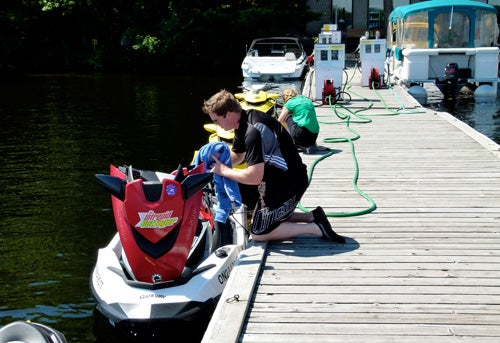 PWC offer limited storage space, so packing smart is essential.
PWC offer limited storage space, so packing smart is essential.Try to limit items that need to be kept on ice. Instead, opt for simple canned goods that can be heated with a compact camp stove, or packaged foods preferred by campers. For cleanups, bring a biodegradable camping soap that can do triple duty for you, your clothes, and your dishes.
It’s Your Waste…Take it With You
As the saying goes, leave no trace behind. And yes, that means your own waste products. You can relieve yourself one way on rocky or sandy areas away from camp or below the high-tide line, but for that other number, find a backpacker’s solution like Cleanwaste’s Toilet In A Bag.
 Though it’s a unpleasant thought, the next camper at your location will surely appreciate it if you take your waste back with you.
Though it’s a unpleasant thought, the next camper at your location will surely appreciate it if you take your waste back with you.Yeah, it’s pretty much just what it sounds like. Try to remember, you’re camping, not spending the night at the Hilton.
Don’t Forget to Tell Your Friends
Don’t forget to leave some kind of float plan or itinerary with friends or family. Cell phone coverage isn’t a given in many remote areas, so let them know where you expect to be and when. And though it should be a given with any kind of long-distance adventure, don’t forget some essentials like a handheld GPS, basic first aid kit, and some type of signaling device.
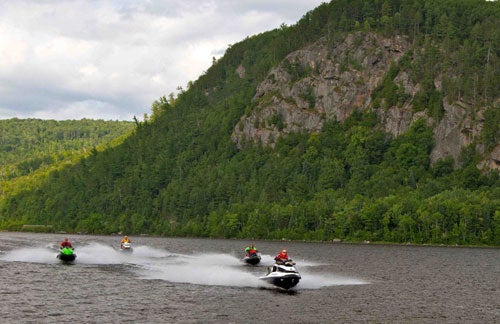 You should always tell a friend where you are going, but there’s nothing wrong with bringing them along.
You should always tell a friend where you are going, but there’s nothing wrong with bringing them along.Can’t safely get there and back without a gas stop? Scope out marinas or close-to-the-water fuel stations along the way, and call to make sure they’ll be open during your trip. If you need to carry extra fuel, use smaller, portable cans, and fashion them securely to your craft on the aft swim platform.
Allow Yourself an Extravagance…or Two
Space is critical, but don’t forget an extravagance or two that will make the trip a lasting memory. You choose what will make your trip special, but my suggestion is don’t forget to bring a camera. Pictures will allow you to relive the trip, long after you’ve returned to the real world.
Get PersonalWatercraft.com in your Inbox!
Like PersonalWatercraft.com on Facebook
Comments
Most Popular

2025 Yamaha JetBlaster PRO 2-Up Review

2024 Kawasaki Jet Ski STX 160X Review

Remembering the Sea-Doo XP

Whatever Happened to the Wetbike?

2025 Yamaha JetBlaster Review




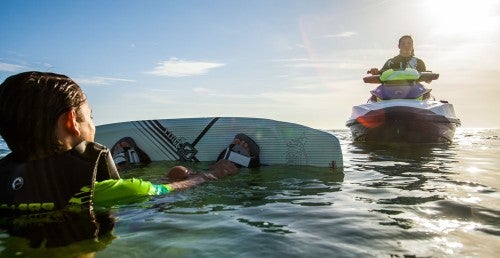








 Your Privacy Choices
Your Privacy Choices